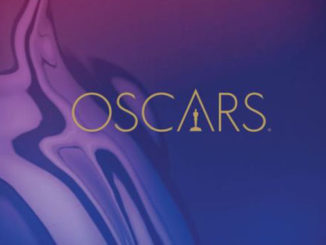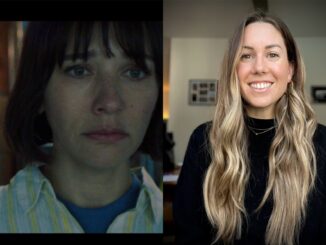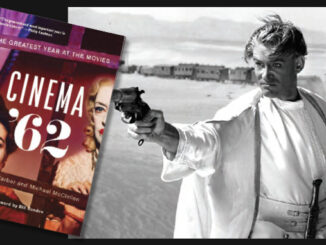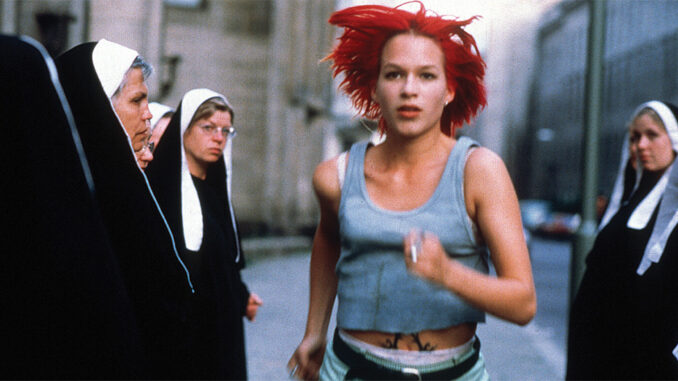
by Michelle Harrison
I grew up in Deep River in Northern Ontario, Canada in the 1970s, an idyllic place to live as far as catching frogs and running through the woods, but I didn’t get to see movies in the cinema very often. The movie theatre in town didn’t play most new releases, and when a film did play there, it seemed to stay for months. The only screening of Star Wars had been around 30 miles away, at a drive-in.
When I was 11, my family moved to the suburbs of Toronto, and all that changed. This was the early 1980s and the dawn of multi-screen theatres. Finally, it was easy to see movies! Shortly thereafter, a friend suggested we go see Raiders of the Lost Ark.
Late for the packed screening, we rushed in and found seats just as a man in a wide-brimmed hat entered a cave… Within seconds, my heart was pounding as I was taken on the most exhilarating movie-going experience of my life. I was hooked! I emerged from the darkness determined that I wanted to spend my life making people feel this great; I wanted to make movies!
By the late ’90s, I was living in New York City, following the moviemaking path and working as an assistant editor. New York then was at the center of the indie film boom and I found it extremely inspiring. Film school had exposed me to alternative filmmaking — experimental films, feminist films, documentaries — and I was drawn to films that took risks and experimented with technique and narrative while also exploring feminism, existentialism and ideology. New York was an amazing resource, and I saw everything I could.
Despite my interest in art-house films, my love of action films never faded. I struggled with resolving the two genres, which were often discussed as at odds with one another. While non-mainstream films can be bold, contemplative, provocative and deeply emotional, movies as rollercoaster rides were the stuff of Hollywood. That is until I ended up at a screening for the German film Run Lola Run, directed by Tom Tykwer, at the Museum of Modern Art.
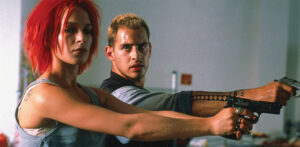
Sony Pictures Classics/Photofest
Run Lola Run begins as a phone rings and Lola answers to find the desperate Manni, her boyfriend, on the other end. Manni explains that he has lost Deutsche Marks (Germany did not switch its currency to the Euro until 1999) and has 20 minutes to find it or his mobster boss will kill him. He begs Lola to save him and she embarks on a frantic quest to help — with the film detailing three different attempts.
Each of the efforts is an exhilarating 20-minute thrill ride as Lola races against the clock. Blending numerous film techniques (animation, fast- and slow-motion, still photography, different resolutions), all cut fantastically by Mathilde Bonnefoy, ACE (earning her an Eddie nomination) to a pounding industrial beat, the film assaults us with frenetic energy and never lets us forget Lola’s task.
At first, each scenario is almost identical. The shots are in the same order, the angles the same, but as the narrative begins to change, the repetition stops. Words are left off in one scene that completely changes the meaning from the previous version, and the story changes. Action is also abridged. By cutting in and out at slightly varying moments, different nuances of story and character are revealed. This editing of story and time — and how they intersect — is impeccable. The film brilliantly combines breathtaking pace with existential ideas about narrative, choice and fate.
Finally, a scene in the third version brings the action to a halt as Lola hitches a ride in an ambulance. Inside, a man is having a heart attack. Lola takes his hand and the warmth of her touch seems to soothe him and restore his heartbeat to normal. For a brief, beautiful moment, time stands still and the power of human empathy is revealed. Unlike the other two versions, this one finishes with a happy ending.
Seeing Run Lola Run on the big screen was just like watching Raiders all those years ago; I was completely blown away. But this time, it was with an independent film that pushed boundaries, challenged me intellectually, moved me emotionally and took me on an absolute thrill ride.
Having a female lead like Lola (Franka Potente) was also important to my feminist interests. Here is a physically strong and particularly clever female protagonist who, for once, is doing the saving! Run Lola Run showed me that if you break rules, experiment and use what you have, it is possible to combine the innovative ideas and techniques of art-house film with endorphin-pumping action.
Now, as an editor, I try to remember this experience as I approach each project, looking for a way to take what I have and cut it a new way, work outside the box and create something original that perhaps, with a little luck, might blow the audience away!


